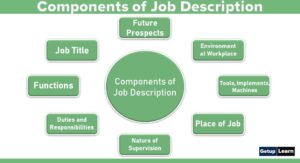Table of Contents
What is Benchmarking?
Benchmarking is a continuous process of evaluation and learning of the best-in-class business practices. The process focuses on the identification of the best performers in the industry, to evaluate those business processes to learn and integrate the practices to enhance the performance of the firm.
Learning the factors contributing to the enhanced performance of the best firms, adopting those practices, and improvising to a raised level of performance is the heart of benchmarking.
Benchmarking is a continuous learning exercise not restricted to learning from firms within the industry but also from firms of allied or non-allied industries. Learning of the best practices is not limited to competing firms but to non-related non-competing firms as well.
The concept of benchmarking was initiated at Xerox Corp. in 1979 through reverse engineering of the rivals’ products in the market. The concept was developed with a view to eliminating waste, reducing cost, and raising the quality of products. Present-day benchmarking is based on thirty-year-old exercises at Xerox.
Guidelines for Benchmarking
In the exercise of benchmarking, it is essential that firms first learn their status of business in totality, the critical success factors, etc. The following can be a guideline for the initiation of benchmarking exercises for a firm:
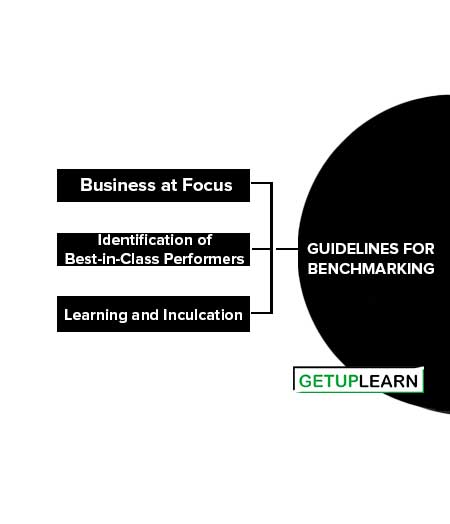
The business at Focus
The firm must be aware of the strengths and weaknesses of the practices being followed in it, the results of performance based on its current practices, detailed processes, and activities. This requires that the operations of the firm are documented in detail.
Identification of Best-in-Class Performers
There is plenty to be learned from the best performers, their policies, operations, strengths, etc. It is however not restricted to those within the industry. Some practices from non-related industries may also serve as learning lessons.
Learning and Inculcation
The firms need to learn the lessons behind the best performers and inculcate those through internal modifications wherever required for inculcation.
Benefits of Benchmarking
Some benefits of benchmarking are given below:
- Increase Productivity and plan for long-term profitability.
- Helps the firm to study its current practices to identify practices requiring improvement.
- Helps to explore directions in which competitors are growing and hence helps to keep pace with the changes in the market industry or the larger market scenario.
- Continuous learning exercise to reengineer existing practices.
- Helps to assess strengths and weaknesses and to learn from their weaknesses to explore new areas of improvement.
- Helps to improvise performance through innovative practices and realign goals in the direction of growth triggered by market changes.
Understanding the Benchmarking Concept
Best practices are no longer limited to the type and characteristics of a firm or industry. The same can be adapted and replicated in any firm in any industry. Hence best practices can be benchmarks irrespective of the type and nature of business.
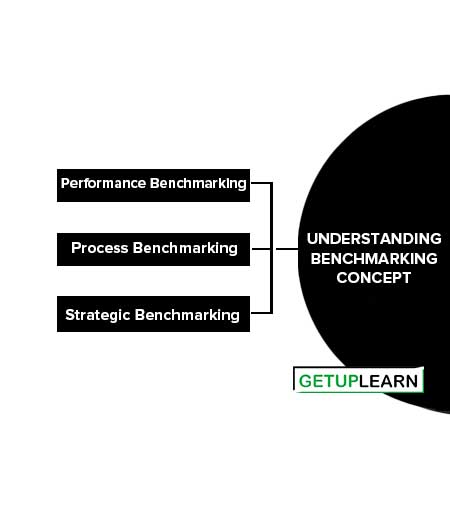
Performance Benchmarking
It refers to benchmarking the performance with any other firm in terms of overall performance.
Process Benchmarking
It relates to benchmarking measures which can indicate the performance of a firm in terms of customer satisfaction, sales volume, assets, etc.
Strategic Benchmarking
It relates to benchmarking the long-term activities of other firms in line with the objectives set and the strategies followed for achieving those.
Types of Benchmarking
Based on the performers’ type and category, types of benchmarking can be classified into four categories:
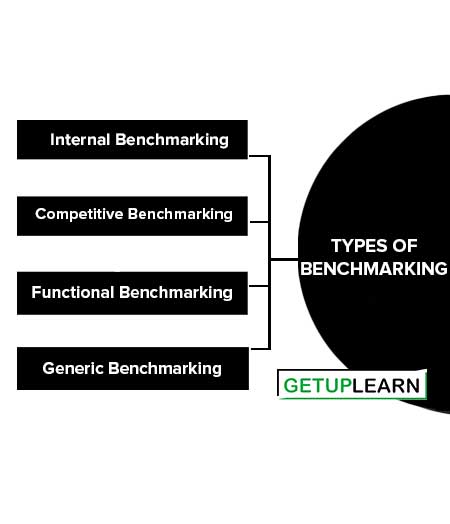
Internal Benchmarking
Internal benchmarking is an intra-firm benchmarking exercise where the comparison is done amongst/ between the best-performing departments of the firm.
Competitive Benchmarking
Competitive Benchmarking is the intra-industry benchmarking against similar firms within the industry putting up the best of performance.
Functional Benchmarking
Functional Benchmarking is the exercise of comparison conducted across similar firms but non-competitive in nature to benchmark the best functions and processes.
Generic Benchmarking
Generic benchmarking is conducted across businesses irrespective of the nature, class, or type of business. It is not limited to the industry or geography of the firm.
Limitations of Benchmarking
The following are the limitations of benchmarking:
- Learning in detail about the best-performing firms, the policies, and implementation details is not an easy task. More complicated is the process of adapting the same.
- Benchmarking to be successful should be a continuous process. It cannot be conducted occasionally.
- Financial details are generally easy to access; hence benchmarking exercises normally remain restricted to the assessment of financial performance indicators.
- It is easy to identify the best performers and the practices yet implementing those through changes in policies, structures, etc. in a firm may be extremely difficult, especially because that might require strategic level modifications.
Process of Benchmarking
The fundamental premise on which benchmarking can be conducted in a firm is a thorough learning of the firm’s current practices and its alignment of objectives and strategies with the vision and mission statement.
Knowing the organization first can help to first focus on its strengths and weaknesses to strengthen and improvise further. The process of benchmarking consists of five steps as detailed below:
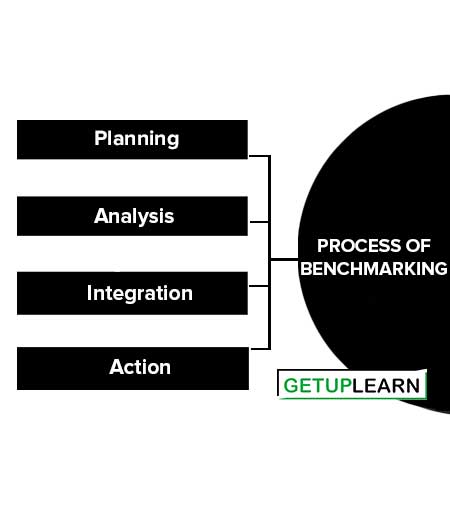
Planning
Planning is the first phase in benchmarking. The firm chalks out the process or product or practice for benchmarking and identifies the industry or the firm with which it is to be performed.
The firm forms a benchmarking team for the smooth conduct of the exercise. The firm explores sources of data that can serve as feeders to the exercise.
Analysis
An analysis is required to assess the gap that exists between the firm and the benchmark chosen. Learning of the internal business process of the benchmark needs to be conducted for the same.
Integration
Learning the best business practices should follow measures for adaptation of the same in the firm and in its practices. The best practices so learned need to be communicated to the employers for adaptation. This requires extensive sessions with the employees to explore mechanisms for smooth adaptation.
Action
Learning succeeds action of the implementation of the practices in the firm. A detailed action plan is set with specific actions, measurements, and progress that would follow.
Maturity
The successful implementation of the benchmark processes and complete institutionalization with the existing processes complete the process. A continuous improvement plan is to be in place to ensure updating of the practices adopted. It now opens up other avenues of processes for benchmarking.
What are the types of benchmarking?
These are the four types of benchmarking: 1. Internal Benchmarking 2. Competitive Benchmarking 3. Functional Benchmarking 4. Generic Benchmarking.
What is the process of benchmarking?
These are the five steps of the process of benchmarking: 1. Planning 2. Analysis 3. Integration 4. Action 5. Maturity.

